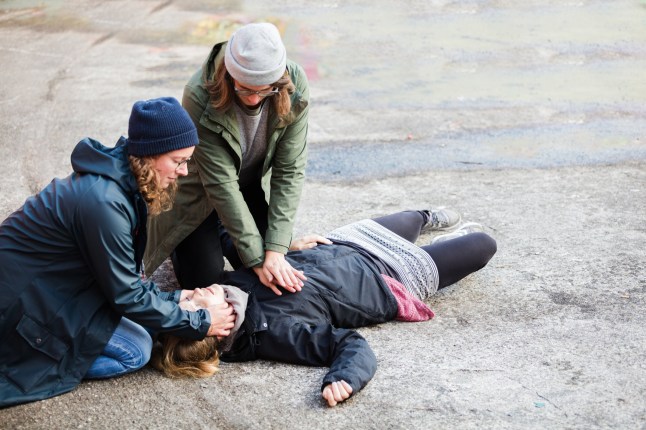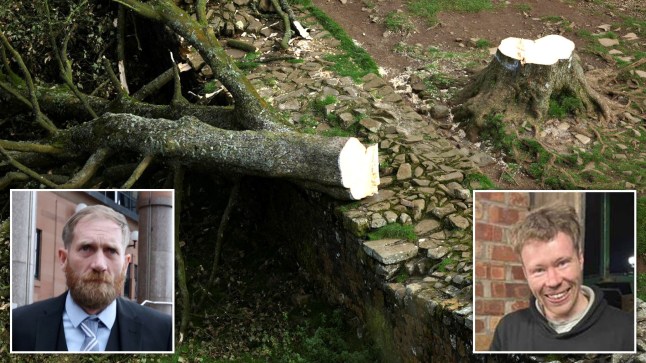To view this video please enable JavaScript, and consider upgrading to a web
browser that
supports HTML5
video
Learner drivers will soon have to prove they know CPR as part of the theory test upgrade, the Driver and Vehicle Standards Agency has announced.
The official learning materials for the car and motorcycle theory tests will cover questions about Cardiopulmonary Resuscitation (CPR) and how to use defibrillators (AED) after a push by the DVSA and campaigners.
The new CPR questions will be included in the test from early 2026 and are designed to boost drivers’ skills and confidence.
The DVSA said motorists are often the first on the scene when someone has had a heart attack or a crash, adding that part of being ‘a safe and responsible driver is knowing what to do in an emergency’.

Sign up for all of the latest stories
Start your day informed with Metro’s News Updates newsletter or get Breaking News alerts the moment it happens.
One of the campaigners for the rolling out of CPR is professor Len Nokes, chairman of Save a Life Cymru, whose 24-year-old daughter Claire suffered a cardiac arrest just days after Christmas in 2016.
Claire was visiting a friend at their house when she suddenly collapsed. Paramedics were called to the scene, and she was taken to hospital.
Her brain was starved of oxygen for more than 20 minutes meaning she never recovered. After receiving round-the-clock care, she died nine months later.
Nokes, who is a doctor, told Metro of the ‘sheer hell’ when Claire fought for her life for nine months before passing away.
Without successful CPR every minute, the person has a 10% less chance of survival, he said.
To view this video please enable JavaScript, and consider upgrading to a web
browser that
supports HTML5
video
Nokes told Metro: ‘She’s there every day of my life, I go to visit her grave every day of my life and I talk to her every day of my life.
‘It’s why I do it – I don’t want anyone else go through what me, my wife and and my son went through.
‘I’m not saying it definitely wouldn’t have happened, but I’m saying there is a chance, and that is all I’m asking for.’
He now wants to promote for young people to learn even the most basic CPR skills as even young people like his daughter can suffer a heart attack.
Nokes, who has been spearheading the campaign, said he hopes the theory test change will then encourage learner drivers to learn further CPR skills.

He warned that British drivers’ CPR skills and confidence are ‘very low’ at the moment.
‘People don’t want to do it and they think it is a very complicated procedure,’ he said.
‘2.4 million drivers get their licence each year, and they will be taught that you can put a defibrillator on somebody’s chest – they are already dead, so you can’t do any more damage, so shock them and see what happens. With a defibrillator, the chances of somebody surviving have significantly increased.’
Meera Naran MBE, a road safety campaigner, lost her eight-year-old son Dev in a car crash.

She said: ‘I welcome this significant milestone in road safety.
‘Raising awareness of this vital, life-saving skill could increase the chance of survival not only in the immediate aftermath of a road crash, but also in our everyday lives.
‘This policy update meets core domains: road safety, education, and public health and will play an essential part in not only saving lives but also our NHS.’
The DVSA has worked with Resuscitation Council UK, and the Save a Life groups in Wales, Scotland and Northern Ireland for the UK-wide change to help decrease road deaths and give people the confidence to perform CPR.
DVSA Chief Driving Examiner, Mark Winn, said: ‘Part of being a safe and responsible driver is knowing what to do in an emergency – how to step in and make a real, life-saving difference.
‘Learning CPR and how to use a defibrillator is a very simple skill and adding this into the official learning resource is a great way for DVSA to support the drive to raise awareness.’
How CPR can help in a cardiac arrest
More than 40,000 people suffer a heart attack out of a hospital.
Fewer than 1 in 10 survive it, but if a defibrillator is used within 3-5 minutes of collapse, the rate of survival can be up to 70%.
It is thought that around 80% of cardiac arrests happen at home.
Next, the first aid campaigners want to see defibrillators being made mandatory in large buildings over a certain size or occupancy, like fire hydrants are.
Get in touch with our news team by emailing us at webnews@metro.co.uk.
For more stories like this, check our news page.


